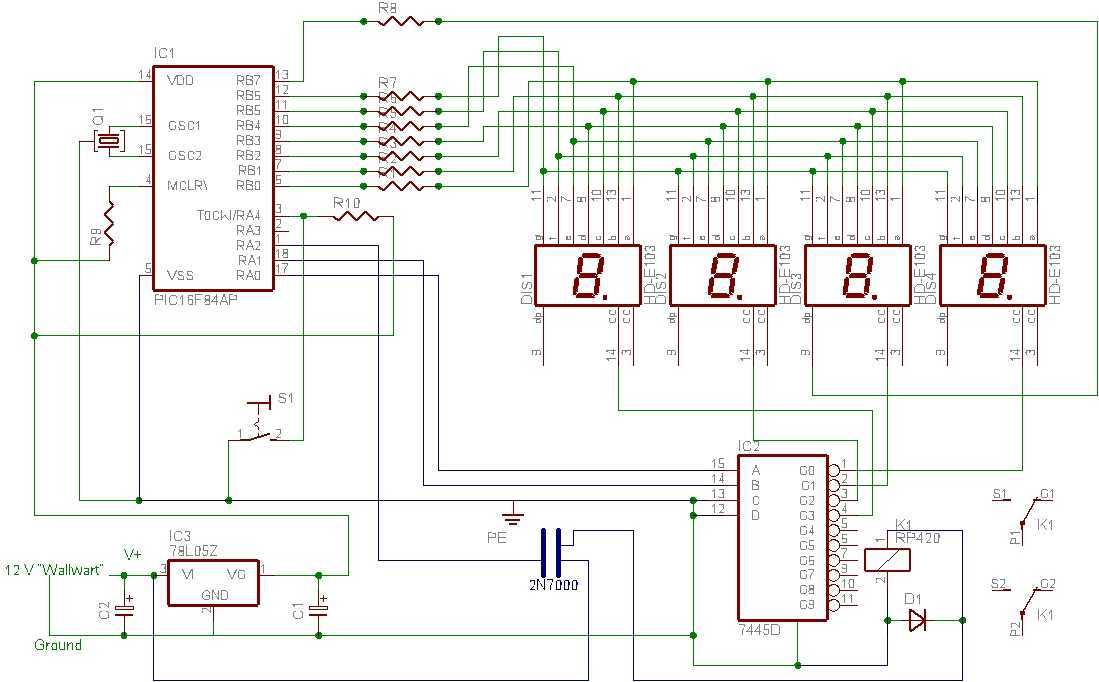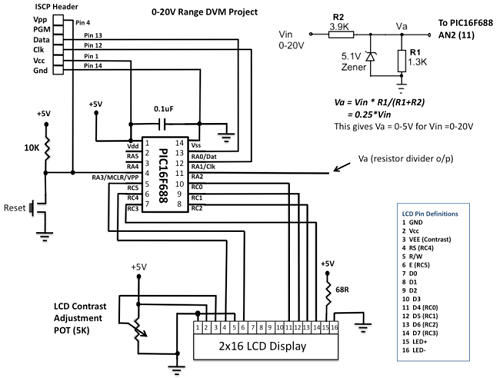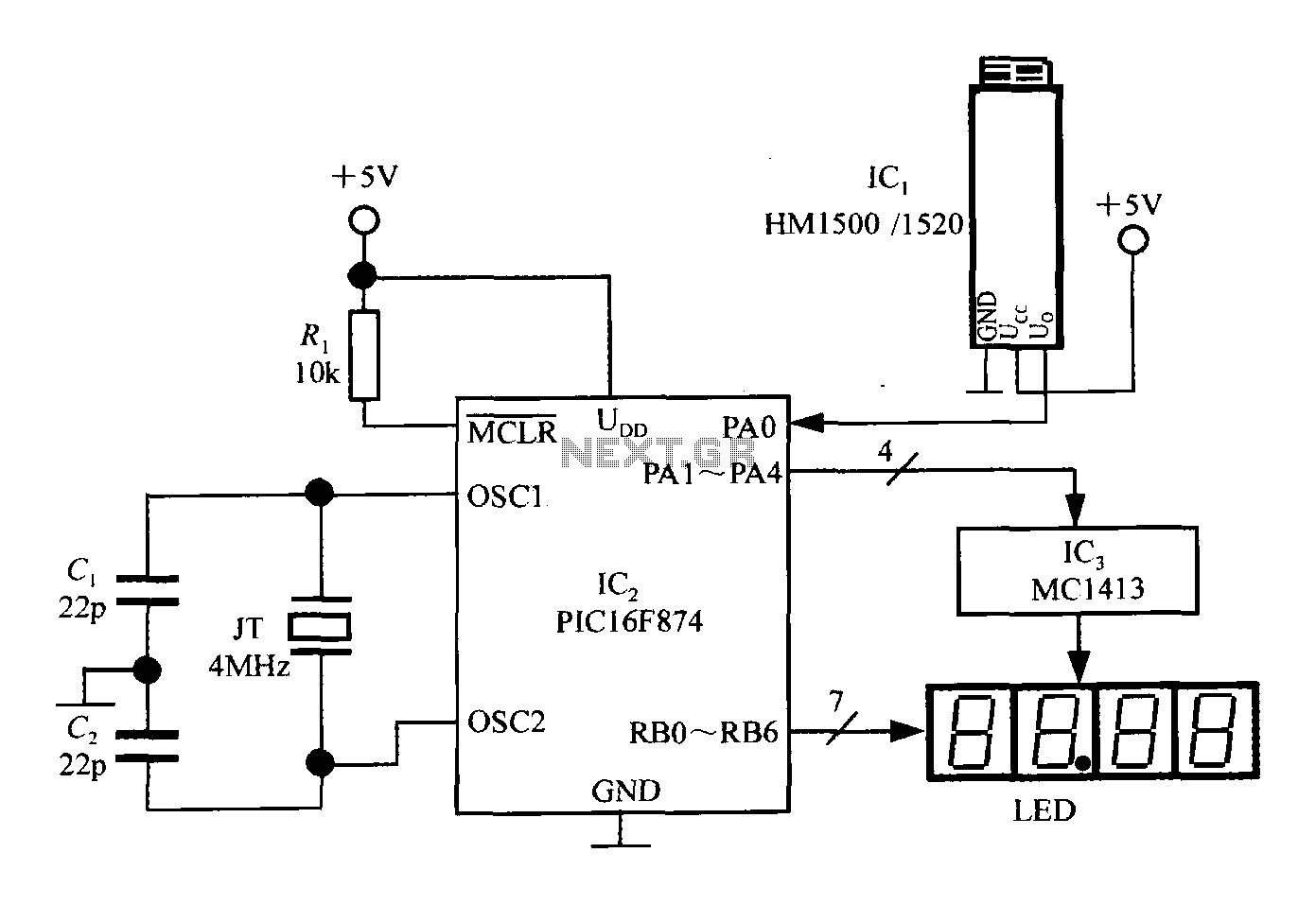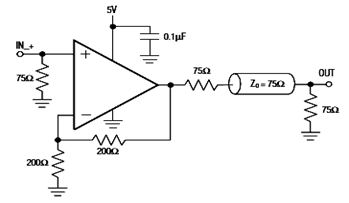
PIC IR Decoders
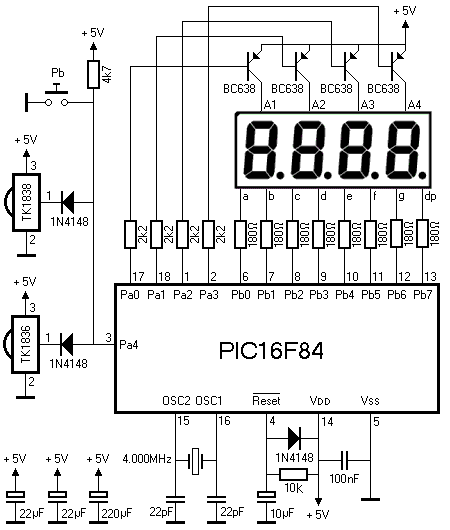
All PIC IR decoders share the same easy-to-build hardware. All components for this hardware are readily available globally. Constructing it should not take much longer than one evening. At the center of the diagram is the PIC16F84 processor, accompanied by standard components such as a 4.000 MHz crystal and reset circuitry. The PIC16C84 can also be utilized if available. Two types of IR receivers have been employed in this project: one tuned to a 36 kHz carrier and the other to 38 kHz, ensuring adequate sensitivity for all supported protocols. The exact types of receivers used are not critical, as there are many similar receivers that can function in the same manner. The signals from both receivers are combined using two diodes before being applied to PORTA bit 4 of the PIC. It is essential to connect a 22 µF capacitor close to the supply pins of each receiver. A push button is connected to the same input of the PIC, which currently has no function but may be utilized in future programming to select between multiple IR protocols. The schematic concludes with a multiplexed 4-digit LED display, which is preferred for ease of wiring over four separate one-digit displays. The individual segment current is limited by eight 180-ohm resistors, and the common anodes of the four displays are driven by four PNP transistors. If the specific type used is unavailable, any PNP transistor capable of driving approximately 200 mA can be substituted. The device is built on a pad board with road-runner wire, as no standard PCB is designed for it. This construction method is advantageous for being fast, easy, and compact, with the board measuring only 7x4 cm. Building the PIC IR decoder requires no special skills, and there are no significant pitfalls in this project. It is important to place the decoupling capacitors as close to the supply pins of the ICs as possible, noting that both IR receivers are also ICs.
The PIC IR decoder circuit is designed around the PIC16F84 microcontroller, which serves as the central processing unit. The microcontroller is powered by a standard supply voltage, typically 5V, and requires a 4.000 MHz crystal oscillator for timing precision. The reset circuitry is vital for initializing the microcontroller upon power-up, ensuring reliable operation.
The IR receivers used in the project are tuned to different carrier frequencies, allowing for compatibility with a variety of IR remote control protocols. The combination of the two receivers helps enhance the system's sensitivity and reliability. The signals from the receivers are rectified and combined via diodes to ensure that the microcontroller receives a clean and stable input signal at PORTA bit 4.
The inclusion of a push button provides potential for future expansion, allowing users to select different IR protocols through software modifications. This flexibility can be beneficial for applications requiring interaction with multiple remote controls.
The multiplexed 4-digit LED display simplifies the visual output of the system, allowing users to easily read information. The use of PNP transistors for driving the common anodes is a common practice in LED multiplexing, as it allows for efficient control of the display segments. The resistors limit the current to prevent damage to the LEDs while ensuring adequate brightness.
The choice of pad board for assembly aids in rapid prototyping, allowing for modifications and adjustments as needed. This method is particularly advantageous for hobbyists and engineers looking to create a compact and functional prototype without the need for a custom PCB design. Overall, the PIC IR decoder project exemplifies a straightforward approach to building a versatile and user-friendly IR communication system.All PIC IR Decoders share the same, easy to build, hardware. All parts for this hardware are easily obtainable throughout the world. Building it shouldn`t take very much longer than one evening. At the heart of the diagram is the PIC16F84 processor. It is accompanied by its standard components like a 4. 000 MHz crystal and reset circuitry. BTW a PI C16C84 works equally well, just in case you have them lying around like I do. I have used two types of IR receivers in this project, one tuned to a 36 kHz carrier and the other to 38 kHz. This ensures adequate sensitivity for all supported protocols. It`s no problem if you can`t get your hands on the exact same types that I have used. There are plenty of similar receivers out there which can be used in exactly the same way. The signals of both receivers are added together by 2 diodes before they are applied to PORTA bit 4 of the PIC.
Be sure to connect a 22 µF capacitor close to the supply pins of each of the receivers. The push button, which is also connected to the same input of the PIC, has no function at the moment. I`ve included it just in case I decide to create a program that can read multiple IR protocols. The push button can then be used to select the protocol. The LED display concludes the description of the diagram. It is simply a multiplexed 4 digit LED display. I`ve used one with 4 digits in one package because it is far easier to wire than 4 separate one digit displays.
The individual segment current is limited by eight 180 © resistors. The common anodes of the 4 displays are driven by four PNP transistors. If you can`t find the type that I`ve used you can use practically any other PNP transistor which can drive about 200 mA. As usual I`ve built my device on a piece of pad board with road-runner wire. No normal PCB is designed for it. Building on pad board has the advantage that it fast, easy and compact. My board measures only 7x4 cm. Building the PIC IR Decoder requires no special skills. As far as I can see there are no pitfalls in this project. The only thing that I should mention (again and again) is to place the decoupling capacitors as close to the supply pins of the IC`s as possible.
Both IR receivers are IC`s too, you know! 🔗 External reference
The PIC IR decoder circuit is designed around the PIC16F84 microcontroller, which serves as the central processing unit. The microcontroller is powered by a standard supply voltage, typically 5V, and requires a 4.000 MHz crystal oscillator for timing precision. The reset circuitry is vital for initializing the microcontroller upon power-up, ensuring reliable operation.
The IR receivers used in the project are tuned to different carrier frequencies, allowing for compatibility with a variety of IR remote control protocols. The combination of the two receivers helps enhance the system's sensitivity and reliability. The signals from the receivers are rectified and combined via diodes to ensure that the microcontroller receives a clean and stable input signal at PORTA bit 4.
The inclusion of a push button provides potential for future expansion, allowing users to select different IR protocols through software modifications. This flexibility can be beneficial for applications requiring interaction with multiple remote controls.
The multiplexed 4-digit LED display simplifies the visual output of the system, allowing users to easily read information. The use of PNP transistors for driving the common anodes is a common practice in LED multiplexing, as it allows for efficient control of the display segments. The resistors limit the current to prevent damage to the LEDs while ensuring adequate brightness.
The choice of pad board for assembly aids in rapid prototyping, allowing for modifications and adjustments as needed. This method is particularly advantageous for hobbyists and engineers looking to create a compact and functional prototype without the need for a custom PCB design. Overall, the PIC IR decoder project exemplifies a straightforward approach to building a versatile and user-friendly IR communication system.All PIC IR Decoders share the same, easy to build, hardware. All parts for this hardware are easily obtainable throughout the world. Building it shouldn`t take very much longer than one evening. At the heart of the diagram is the PIC16F84 processor. It is accompanied by its standard components like a 4. 000 MHz crystal and reset circuitry. BTW a PI C16C84 works equally well, just in case you have them lying around like I do. I have used two types of IR receivers in this project, one tuned to a 36 kHz carrier and the other to 38 kHz. This ensures adequate sensitivity for all supported protocols. It`s no problem if you can`t get your hands on the exact same types that I have used. There are plenty of similar receivers out there which can be used in exactly the same way. The signals of both receivers are added together by 2 diodes before they are applied to PORTA bit 4 of the PIC.
Be sure to connect a 22 µF capacitor close to the supply pins of each of the receivers. The push button, which is also connected to the same input of the PIC, has no function at the moment. I`ve included it just in case I decide to create a program that can read multiple IR protocols. The push button can then be used to select the protocol. The LED display concludes the description of the diagram. It is simply a multiplexed 4 digit LED display. I`ve used one with 4 digits in one package because it is far easier to wire than 4 separate one digit displays.
The individual segment current is limited by eight 180 © resistors. The common anodes of the 4 displays are driven by four PNP transistors. If you can`t find the type that I`ve used you can use practically any other PNP transistor which can drive about 200 mA. As usual I`ve built my device on a piece of pad board with road-runner wire. No normal PCB is designed for it. Building on pad board has the advantage that it fast, easy and compact. My board measures only 7x4 cm. Building the PIC IR Decoder requires no special skills. As far as I can see there are no pitfalls in this project. The only thing that I should mention (again and again) is to place the decoupling capacitors as close to the supply pins of the IC`s as possible.
Both IR receivers are IC`s too, you know! 🔗 External reference
